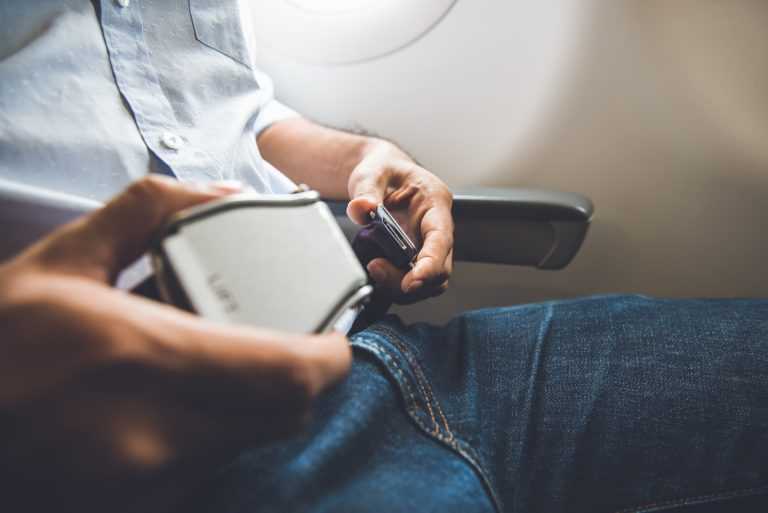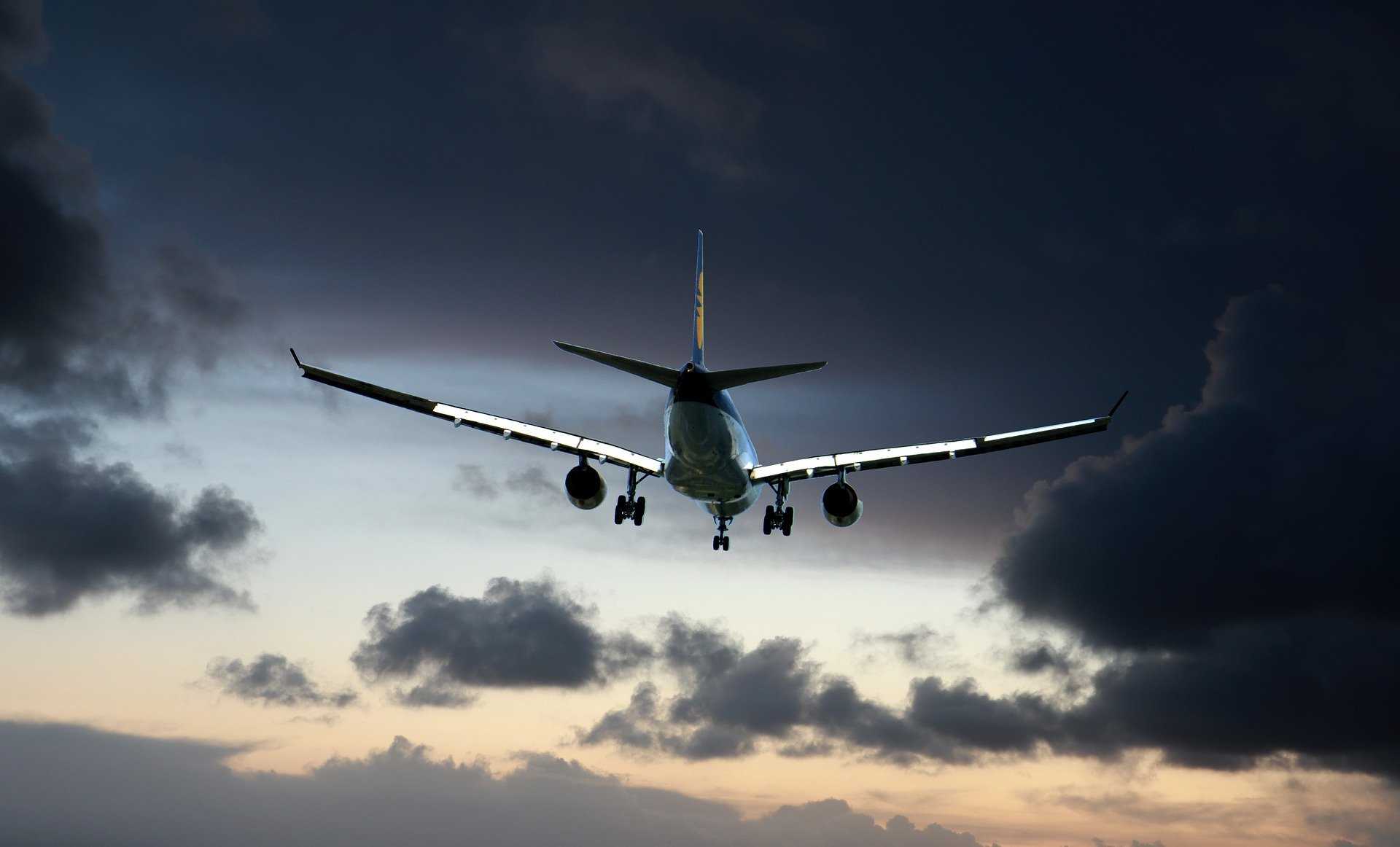


Spartan College of Aeronautics and Technology is a prominent voice in the aviation space. These blogs are for informational purposes only and are meant to spark discussions within the aviation industry on a variety of topics.
Are you wondering about turbulence as an aspiring pilot?
If you go online and try to define turbulence, you might get information that isn’t very helpful. Turbulent meaning can refer to the literal definition of turbulence: “a state of agitation or tumult.”
What the heck is tumult?
Luckily, there’s a more precise definition of turbulence used in aviation!
Even if you don’t know the technical definition of turbulence, you recognize it when you see it – or at least feel it. Turbulence is caused by the movement of disturbed air that an aircraft passes through.
These airwaves are irregular or violent, which causes the plane to “bounce around.” The aircraft pitches from side to side or yaws up and down along the vertical axis. It is up to the pilot to maintain control of the aircraft through a period of turbulence.
Turbulence is an ordinary atmospheric phenomenon most associated with jet streams. The jet streams are narrow, fast-moving wind bands located around the Earth’s poles. As aircraft move through jet streams, differences in wind velocities create shear regions vulnerable to turbulence.
Another common cause of turbulence is mountains. Like ocean waves breaking against the shore, air forms waves as it strikes geographic features. Some air passes smoothly over a mountain. The rest is left to pool against the mountain and has “nowhere to go but up,” creating mountain waves.
Sometimes, mountain waves are wide and gentle, and you will barely notice them whether you are on the flight deck or enjoying time as a passenger. However, it’s also possible for them to break up into a chaotic mass of currents that can push and pull aircraft as they travel through.
Last but not least is turbulence created by thunderstorms. This is most common in coastal areas and inland flats. It also tends to be the most worrisome for passengers. As storm clouds grow, they push air away. This results in turbulence caused many miles away!

You can’t see turbulence, even when you’re about to fly right into it. And there is no way to pick up turbulence itself on conventional radar or other aircraft equipment. However, you can learn a lot about conditions outside of the aircraft.
Instead, pilots communicate about turbulence as they use air corridors throughout the day. The system of air corridors helps commercial aircraft pilots to pinpoint and avoid turbulence. The standard cruising altitude between 30,000 and 42,000 feet also helps avoid most turbulence.
The air corridors are especially important in clear air turbulence (CAT), widely understood as the most dangerous kind of turbulence. Clear air turbulence can occur very quickly and with little warning. Since flight crews have no time to prepare for CAT, moderate and severe injuries are more likely than with other turbulence.
Turbulence can be a scary experience, especially for passengers. Still, it’s incredibly rare for turbulence alone to be strong enough to bring down an airplane. That’s true even in the most severe cases.
There is a standardized scale for understanding air turbulence severity. It is a bit more subjective than other aspects of flight, but it is still good for aspiring aviators to know it.
In mild turbulence, a commercial aircraft could be expected to sustain a few feet of altitude loss. Mild turbulence is routine and nothing to worry about. Passengers may not even notice, especially those seated near the wings of the airplane.
Moderate turbulence is more noticeable and can be unnerving. For example, you might lose 10-20 feet of altitude and experience bumpy conditions for 15-20 minutes. Passengers are usually advised to return to their seats and put on their safety belts until flight conditions normalize.
Last comes severe turbulence. It may cause the plane to drop 80 or even 100 feet, and a rattling sound will be heard in the fuselage. An aircraft is not rigid; the wingtips, in particular, are designed to bend to facilitate flight. This is a good thing, but it means heavy turbulence is much more noticeable!
When heavy turbulence strikes, immediate corrective action must be taken. At flight school, you’ll learn how to use your flight deck controls to change the pitch, bank, and altitude during turbulence.
Although some things about turbulence are unpredictable, there are standard procedures to reduce the impact of severe turbulence. Commercial pilots often need to change altitude to minimize disruption. A decision on whether to climb or descend depends on the prevailing conditions.
Severe turbulence is not a threat to the aircraft itself, but it can be harmful to human health. Unsecured loads may break free and even fall out of overhead compartments. Passengers who are not securely fastened in may sustain injuries, including broken bones, which require the flight to divert for assistance.
Luckily, the level of turbulence necessary to dislodge an engine or bend a wing spar is so rare that even experienced pilots with tens of thousands of hours of flight time will never encounter it.
Turbulence is an unavoidable fact of life due to changes in the density of air no one can predict in advance. New technologies are making it easier to “nowcast” turbulence, but communication is still the most valuable tool for pilots.
The best way to avoid turbulence is to master it. In flight school, you will learn everything you need to know about turbulence and how to manage it. Mastery of fundamental maneuvers and aircraft controls will give you the confidence you need to fly safely and successfully under any conditions.

That kind of confidence doesn’t happen overnight. Confidence increases with practice and experience. It starts with instruction by trained pilots and sufficient training in on of today's most advanced flight simulators. Before you know it, turbulence worry will be a thing of the past!
Contact us to find out more today.
Spartan College offers programs geared toward career-oriented training in the aviation industry. Click here to learn more about our programs.
Affiliate Partner Program | Jobs at Spartan | Privacy Policy | Opt-out Policy | Privacy Notice - California Residents| Notice of Non-Discrimination | Website Accessibility Help | Transparency in Coverage Act
© 2024 SPARTAN COLLEGE OF AERONAUTICS AND TECHNOLOGY. ALL RIGHTS RESERVED.